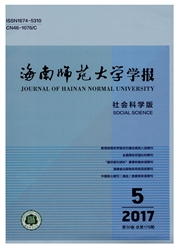

 中文摘要:
中文摘要:
历史上的湘南地区是"蛮夷"的聚居区,在屡次的北人南迁运动中,南方少数民族与汉族不断接触乃至融合,汉语与少数民族语言之间也不可避免地发生语言的"横向传递"。历史事实和零陵话的语言特征表明,零陵话中的否定副词"很"来自瑶语的否定词[η],其读音经过了零陵话音系规则的调整。"很"用法特点的形成与汉语与瑶语之间的两次"横向传递"有关。
 英文摘要:
英文摘要:
Historically the southern part of Hunan used to be a place inhabited by people of minority ethnic groups. In the repeated process of northerners' migration to the south,there have been constant links and even integration between ethnic minorities in South China and the Han nationality,thus leading inevitably to the "horizontal transmission"between the Chinese language and languages of ethnic minorities. As indicated by historical facts and linguistic traits of the Lingling dialect,the negative adverb ""xδ44( 很) "in the Lingling dialect is derived from the negative word [n]in the Yao language,and the pronunciation of"xδ has somewhat been adjusted by the phonological rules of the Lingling dialect. Therefore,the traits in the usage of "xδ"44( 很) "in Lingling dialect is somewhat related to the two horizontal transmissions between the Chinese language and the Yao language.
 同期刊论文项目
同期刊论文项目
 同项目期刊论文
同项目期刊论文
 期刊信息
期刊信息
